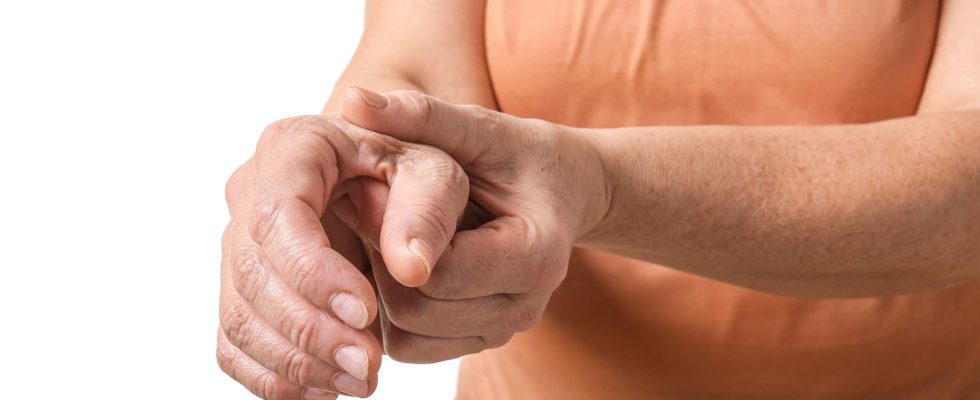Fahr’s disease or bilateral striopallidodentate calcinosis (CSPB) is a very rare neurodegenerative disease (about a hundred cases in France) with certain symptoms resembling Parkinson’s disease.
What is Fahr’s disease?
Fahr’s disease, whose scientific name is bilateral striopallidodentate calcinosis (CSPB), is a disease extremely rare and neurodegenerative, characterized by the accumulation of calcium deposits in different areas of the brain, mainly in the basal ganglia and the dentate nucleus. It owes its name to Carl Theodor Fahr, the first neurologist to have described it in 1930. In France, there would be approximately a hundred cases in Francesays Dr. Michel Dib, hospital practitioner in the neurology department of the Pitié-Salpêtrière hospital (APHP).
What are the symptoms of Fahr’s disease?
Symptoms of Fahr’s disease are similar to those of other conditions, including Parkinson’s disease. The first signs usually appear around the age of 40 years :
- Parkinsonian symptoms: tremors, rigidities, gait disturbances and swallowing disorders
- An unbalanced gait and a shaky voice
- Seizures
- memory problems
- Neuro-psychiatric disorders: obsessive disorders, personality disorders, anxiety, depression…
- The disease can sometimes be asymptomatic, especially in very young individuals (under 25 years old)
What is the cause ?
Fahr’s disease is idiopathic, that is to say that we do not know the cause. “It is a rare disease, and research is progressing very slowly because there is no equipment and few patients to test on.“, deplores Michel Dib. However, we know that there are genetic forms, most often linked to chromosome 14q. The involvement of this gene has been proven by the study of a family, within which the disease spreads. This is encouraging since studying genes makes it possible to understand the mechanisms of the disease and to guarantee faster diagnosis within families where it is transmitted from generation to generation.
It is difficult to diagnose Fahr’s disease, since its symptomatology can be confused with other pathologies. “Almost half of patients are never diagnosed“, underlines our interlocutor. When they are, it can occur after 3 to 10 years of medical wandering. Classically, the diagnosis of Fahr’s disease begins with questioning the attending physician or neurologist, who prescribes a CT scan or an MRI to the patient. The discovery of calcium deposits in certain areas of the brain – the basal ganglia, the dentate nucleus, the thalamus and the cerebral white matter – allows the diagnosis of bilateral striopallidodentate calcinosis. A genetic test can then be performed, to look for mutations in certain genes. As said before, the most common is chromosome 14qbut chromosome 2 and chromosome 8 are also involved, reports our expert. An electromyogram may also be prescribed to analyze the electrical activity of nerves and muscles, as well as radioactive examinationsin order to examine the centers of memory, where cerebral degeneration can be observed.
Evolution: what are the risks of complications?
Fahr’s disease manifests suddenly in adulthood and his symptoms worsen rapidly. It impacts everyday life, because walking is affected and swallowing is complicated.
Can you die from Fahr’s disease?
“One cannot die from Fahr’s disease in itself, but from its indirect consequences linked to the complications of the disease. The patient can reach a bedridden state if the symptoms are very present.“, he points out.
What is the treatment for Fahr’s disease?
No cure has been found for Fahr’s disease, but its symptoms can be alleviated. L-Dopa or Elvodopa may be prescribed for Parkinsonian symptoms, along with antipsychotics or antidepressants against the psychiatric manifestations of the syndrome. Antiepileptics may also be effective against seizures. In parallel with drug treatment, the neurologist advises functional and speech therapy rehabilitation.
Thanks to Dr. Michel Dib, hospital practitioner in the neurology department of the Pitié-Salpêtrière hospital (APHP).
